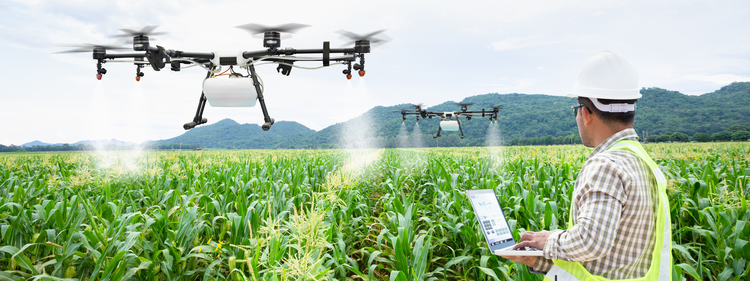By Lacie Armstrong
Global Warming continues to threaten every aspect of agriculture, especially crop production. It reduces the soil moisture in areas close to the equator while leaving northern countries virtually unscathed, according to study from Wageningen University. The impact of these hazardous rising conditions on food production can be seen in the form of lower crop yields.
This reduction in food production is devasting to developing countries. Climate change causes trillions of consumable foods per year and harms poorer countries who do not have the economy to support importing food. By the year 2100, sea levels expected to rise by one meter, which will have a detrimental impact on growers on the coasts whose crops cannot survive in areas where the water is too salty. The process of clearing land for agriculture results in widespread deforestation and contributes to 40 percent of global methane production. Therefore, to face the battle of climate change head on, it is necessary to ensure reforestation—but how? What is the right path to environmentally-friendly farming?
Agriculture is caught in a viscous cycle, one being agriculture as victim and the other, causing global warming. This, is where artificial intelligence (AI) is now being used by corporations across the globe to implement this technology in agriculture in order to process large quantities of data, interpreting patterns in that data, and then translating these interpretations into actions that resemble those of a human being. AI has the potential to create more efficient methods of farming in order to combat global warming, but only with expanded regulation of its development.
WAYS AI CAN HELP:
Farmers use AI for methods such as precision agriculture; they can monitor crop moisture, soil composition, and temperature in growing areas, enabling farmers to increase their production yields by learning how to take care of their crops and determine the ideal amount of water or fertilizer to use. Furthermore, this technology may have the capacity to reduce deforestation by allowing humans to grow food in urban areas.
AI can help locate and therefore protect carbon sinks, forest areas that absorb carbon dioxide from the atmosphere. Otherwise, continued efforts to clear these forests will release more carbon dioxide into the atmosphere.
AI is being developed that can find and target weeds in a field with the appropriate amount of herbicide, eliminating the need for farmers to spread chemicals across entire fields and pollute the surrounding ecosystem.
AI can also be used to curb global warming outside of agriculture. The technology can be used to monitor how efficiently buildings are using energy and monitor urban heat islands to reduce emissions and encourage more efficient and environmentally-conscious city planning.

RUNNING THE RISKS OF AI:
AI could contribute to global warming. Due to the large amount of data that AI needs to process, training a single AI releases five times the emissions that an average car would emit during its lifetime, thereby adding to the already substantial environmental impact of computing technology.
Securing access to AI on a global scale is a challenge. In order for developing countries to take advantage of the benefits of AI and improve their food security, there will need to be a focus on developing the infrastructure necessary for internet access and teaching professionals how to use the technology.
AI can be expensive. Farmers might go into debt and will not be able to maintain the technology on their own as it suffers everyday wear-and-tear. Those unable to secure will lose out to larger farms that can implement AI on a wide scale.
AI will take over jobs. AI is able to accomplish the same tasks as humans. Their wages could decline or worse, make their jobs obsolete.
Weighing both the pros and cons, AI cannot be the only response to climate change. If countries are to develop AI for use in agricultural sectors, global leaders must consider the potential costs, the role of legal institutions, and the environmental consequences of data processing before investing in the technology on a broader scale.







